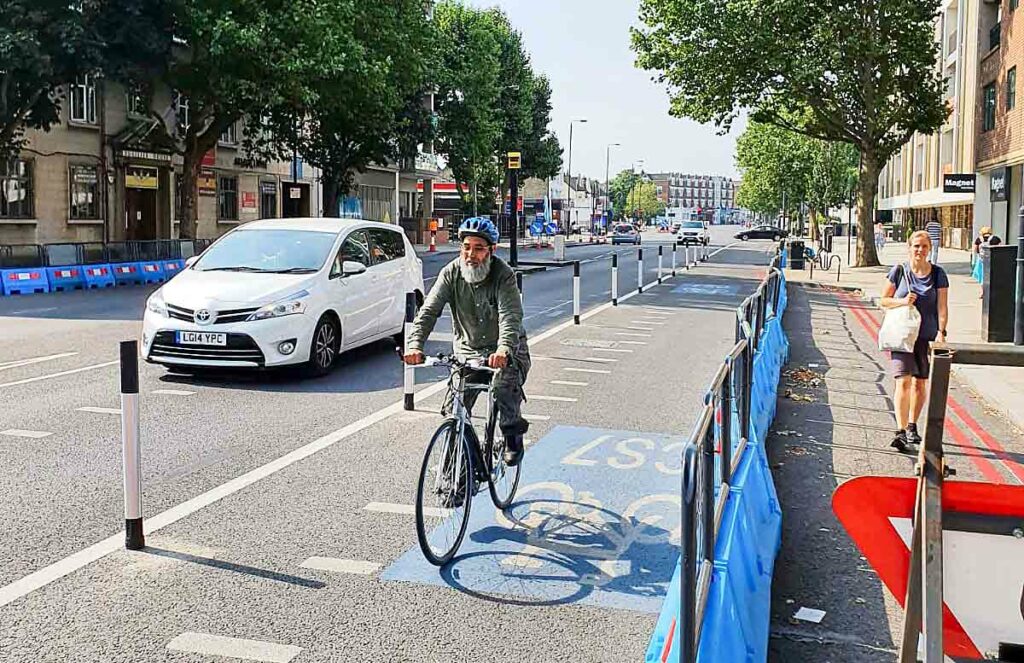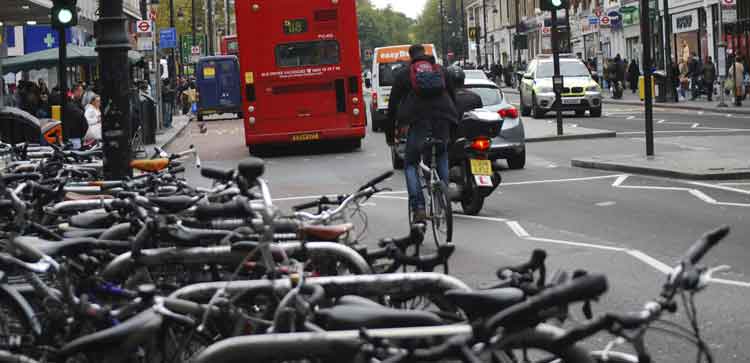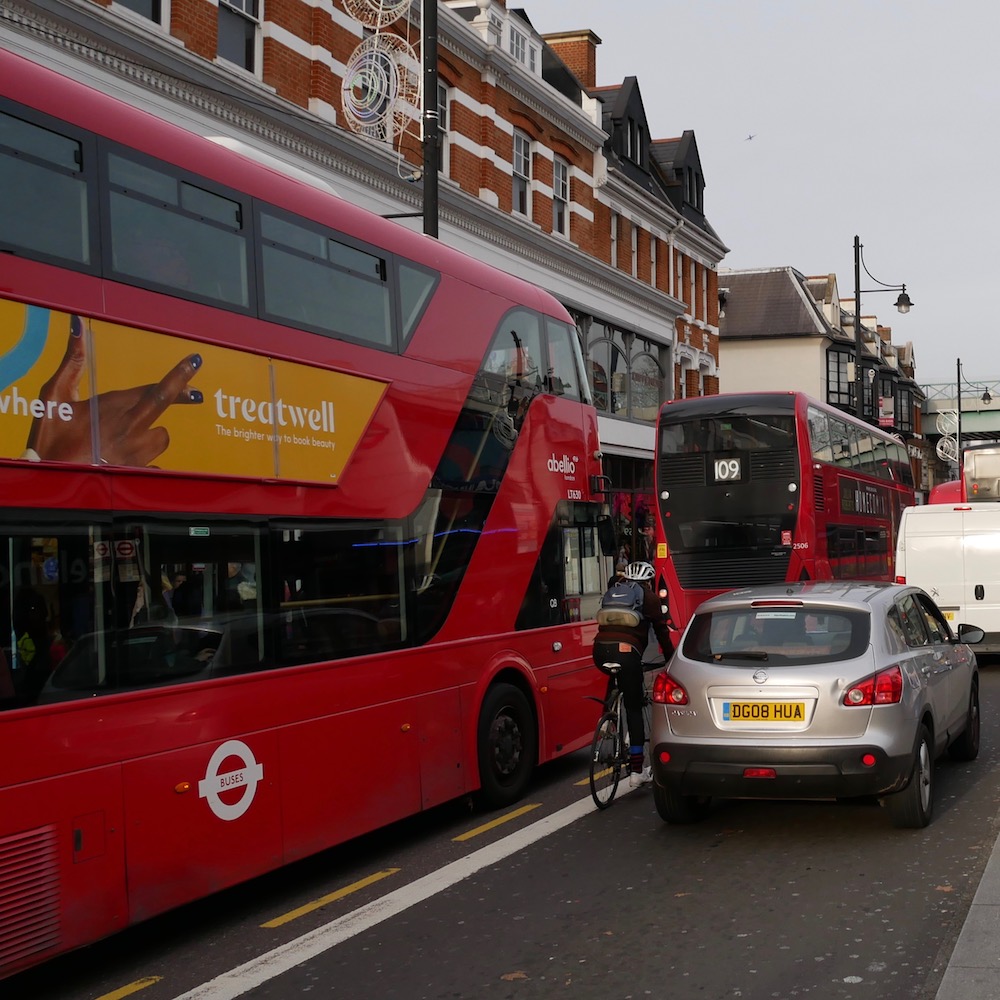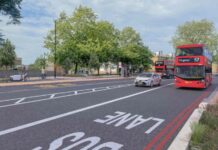
Brixton Road, part of the A23 between Streatham and the Oval, is to see trial changes to bus lanes to make cycling on it safer.
Construction work will begin next month.
Cllr Claire Holland, deputy leader of Lambeth council for sustainable transport, environment and clean air, said: “This is good news for our borough and furthers our aims of reducing danger for people who cycle as well as boosting bus journey efficiency.
“Changes to main roads in Lambeth, together with area-wide low traffic neighbourhoods on our local streets, are the only way we make Lambeth into a borough whereby everyone has access to affordable and safe mobility options.”
Transport for London (TfL) said the changes along the A23 and also on the CS7 cycle route between Oval and Elephant & Castle, “will open up these two key cycling corridors in South West London, enabling more cycle journeys and giving people confidence that they can travel safely along these busy roads”.
Tfl said the changes are a vital part of its response to the pandemic
It is asking people for initial feedback on the plans ahead of construction work which is due to start in early March.
“These changes are being delivered as trials and TfL will welcome further feedback once they are in place,” it said.
The A23 between Oval and Streatham is a vital link between some of South West and central London, “but it can be a very busy and intimidating environment for people cycling, particularly the huge numbers of people across London who have begun or restarted cycling during the coronavirus pandemic,” TfL said.

Changes will include:
- Widening bus lanes at bus stops to make it easier for people cycling to safely pass stationary buses
- Creating separate traffic signals for cyclists at key junctions in the Brixton area to give people cycling an earlier green light, and creating larger advanced stop lines for people cycling at other junctions
- New restrictions on a limited number of left turns for motor vehicles along the corridor to reduce conflict with people cycling
- Longer bus lanes will match an existing 24-hour trial operation to enable essential cycle journeys at all times, as well as improved bus times.
“The changes have been designed to benefit both people cycling and people using buses, with bus journeys set to be made quicker for people travelling through the area,” TfL said.
“The planned changes have been designed for rapid delivery and people cycling in the area will be able to use the upgraded route, after four weeks of construction work, in April. ”
TfL will also make more upgrades to the CS7 cycle route, which is one of the most heavily used in London and has been improved during the coronavirus pandemic, to support essential journeys.
The latest changes, between Oval and Elephant & Castle, will include:
- New cycle “wands” to segregate existing cycle lanes on the westbound and southbound approaches to the Camberwell New Road/ Kennington Park Road junction
- New two-stage turn road markings for cyclists turning right at Camberwell New Road/Kennington Park Road/Harleyford Street junction, and early release signals for cyclists on the Camberwell New Road and Harleyford Street arms of the junction
- Wider bus lanes to make it easier for people to cycle in them
- Some changes to parking and loading bays on Kennington Park Road and Newington Butts
- A restricted left turn from Kennington Park Road into Kennington Lane (westbound) for all traffic except cyclists and Emergency Services, to reduce the likelihood of conflict between motor vehicles and people cycling
- New and longer bus lanes will match the existing 24-hour trial operation to enable essential cycle journeys at all times

The changes will mean that TfL’s upgrade of the 13-kilometre CS7 route is almost complete, making it easier for people to cycle between Colliers Wood, Elephant & Castle and beyond.
The trial changes are being delivered through experimental traffic orders as part of TfL’s pandemic response.
People are invited to submit initial feedback on the changes from tomorrow (12 February) via TfL’s website.
A more extensive engagement process is due to begin once the change s are in place.
TfL said all feedback received from now on will be taken into consideration as part of this process.
“TfL will use this engagement to help it decide whether it is necessary to make any changes to the trial scheme once it is in place, and whether it should stay in place permanently,” it said.
Will Norman, London’s walking & cycling commissioner, said: “Throughout the pandemic we have seen a significant increase in cycling as a form of essential travel and exercise, despite a huge drop in the number of journeys being made with Londoners staying at home.
“Protected cycle lanes, restricted turning movements and wider bus lanes will all reduce road danger for people riding bikes in this area.
“These changes will also extend cycling routes in South West London and its surrounding areas, building on our growing cycle network.
“It’s really important we hear how these trial changes work for those travelling around the area, so I urge people to provide their feedback on the TfL website.”
Cllr Holland also encouraged people in Lambeth to feed back to TfL on how the changes are working whilst the experimental schemes are in place.
Recent data from TfL show a 7% increase in cycling in inner London and a 22% increase in outer London, compared to a count in spring 2019.
TfL’s Travel in London report, published in December, showed that almost half of all journeys between April and June 2020 were made by walking and cycling – up from 29% before the pandemic.






